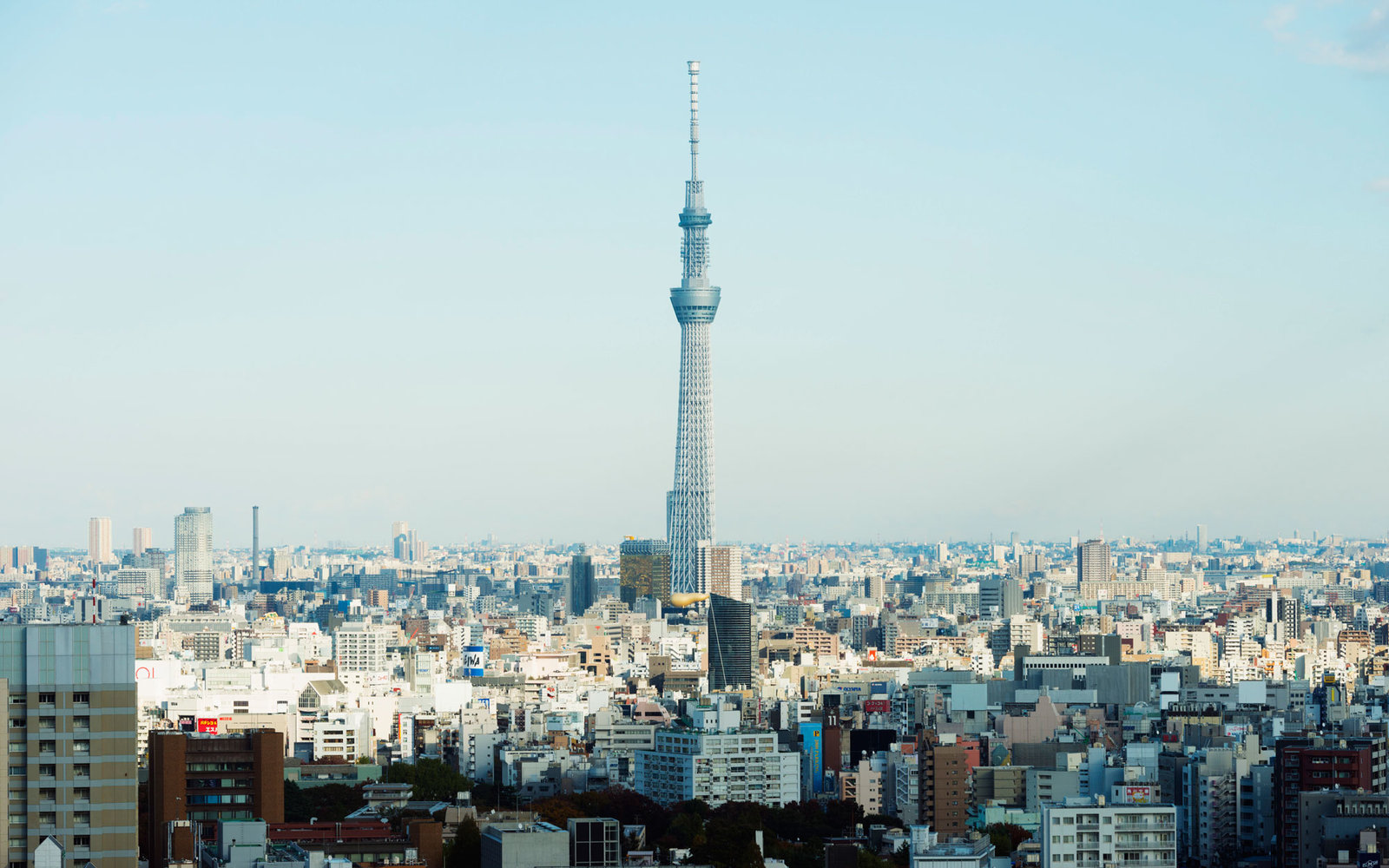
Our picks of what you can miss in Tokyo and where to go instead.
There's plenty to love in Japan's famed capital, from the efficient and sprawling transportation system to the excellent high quality food, and to the exquisite attention to detail in local products. But there are a few things that are over-hyped, offering little bang for big bucks. Go ahead and skip these options the next time you tune in to Tokyo.
Admittedly, the sleek transmitter tower looks kind of cool, especially when it's lit up in a special color scheme. But entry is expensive ($30 on the day of, more for advance tickets), lines are long, and the reservation system is unnecessarily complicated if you want to buy a ticket in advance. You have to visit during a narrow window of time that will put a damper on your plans, unless you love highly scheduled vacations.
Instead, check out the Tokyo Metropolitan Government building, which is free, impressive (designed by famed architect Kenzo Tange), and easy to access. Open late, lines are short (you'll rarely wait more than 10 minutes to go up), and you can also see the nerve center behind Tokyo public works.
The seedy Shinjuku neighborhood famous for its crooked alleys of dingy-looking drinking establishments has had its moment in the limelight, and attracts quite a few tourists looking for an authentic dive experience. The result is a lot of jaded locals, jacked-up prices, and hidden cover charges.
If you want to drink in an old-fashioned alley, try Harmonica Alley in Kichijoji or Ebisu Yokocho, a few of Golden Gai's less famous counterparts. Or wander and discover your own crooked dive; they're strewn all over the city, and finding your own is more fun anyway.
The park isn't even in Tokyo, but in neighboring suburban Chiba, part of the city's vast gray borderlands. This excursion (starting at $57) comes complete with hours-long lines for most of the major rides. Of course, there's the Fastpass, but almost everyone is using that, too, which means you get the privilege of waiting in a somewhat shorter line.
If you really must meet the Mouse, then try Disney Sea, a slightly more adult-oriented park, with different rides than at the main park built around watery themes like Captain Nemo, the Little Mermaid, and 1001 Arabian Nights. Or, skip the Magic Kingdom altogether and hit up Fuji-Q Highlands, a popular amusement park unique to Japan built near the base of Mt. Fuji. The park, which is cheaper by about $15 than Disneyland, boasts several major roller coasters and a whole host of Japanese character-themed attractions, with the fantastic iconic backdrop of Japan's famous mountain.
These establishments feature young women dressed in French maid costumes, sometimes with the addition of cat ears or another cosplay element fad, serving overpriced dishes like waffles and omurice (fried rice omelettes) decorated with hearts and other over-the-top cutesy motifs. The cafes haven't actually been popular domestically for a decade, and are the realm of tourists and creepy nerds.
There are too many awesome themed cafes in Tokyo to keep track of them all, with new ones popping up all the time. Why not try a hammock cafe, a video game cafe, or a Moomin cafe instead?
Although it may seem like a good idea to visit the land of Hello Kitty, the park can be an overpriced nightmare ($31). Attractions are aimed at very small children, yet they can be too loud and scary for the target tots. And while Kitty-chan can be cute in small doses, the large-scale version is overly saccharine.
The Ghibli museum, by contrast, is a lovely place to spend an afternoon for both kids and adults, with lots of props from the famous films made by the prolific Hayao Miyazaki and his Ghibli Studios. Find rooms and gardens decorated with bits from My Neighbor Totoro, Spirited Away, Kiki's Delivery Service, and many more. If you really need a Hello Kitty fix, Sanrio goods are pretty much one of Japan's national currencies, and you can get character gear in just about any department store.
This themed izakaya seems to have an identity crisis. Though it's supposed to evoke the experience of dining in a prison, staff also periodically don monster masks and scream at you while distorted music blares so loudly that you can't finish your conversation. The food is standard bar fare with a few weak gimmicks, like shots in test tubes and sushi "roulette," with one piece loaded with excessive amounts of wasabi.
Pick any good izakaya instead and revel in the authentic, unforced atmosphere.
Once upon a time, this little street in Harajuku may have been a counterculture haven for rebellious teenagers, but it had already jumped the shark by the time Gwen Stefani named her line of accessories after the neighborhood. These days, you're less likely to see the street artists and cosplayers that used to populate the area than the tourists who are looking for them.
You're better off going to Koenji or Shimokitazawa or Nakano, where artists, musicians, and bohemians congregate for the reasonable rent, thrift stores, music venues, and tasty non-chain restaurants.